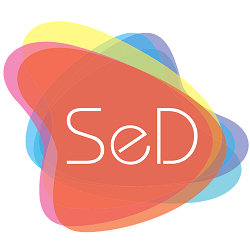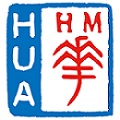SGX-listed Singapore eDevelopment Limited’s (SeD; SGX:40V) wholly-owned subsidiary Impact Biomedical Inc. (“Impact”), announced today the initiation of Quantum, their research program designed to solve the impending pharmaceutical patent cliff threat.
Impact Biomedical’s transition to the Quantum research program comes on the heels of the completion of the research and development stage of its existing biodefense intellectual portfolio, which is now moving to the licensing and commercialization phase. The portfolio, valued by independent experts at approximately US$1.39 billion as announced by the Group on 1 June 2020 includes: Linebacker, a universal therapeutic designed to shadow the Panacea Project, a US Defense Advanced Research Projects Agency (DARPA) program to provide novel, multi-target therapeutics for unmet physiological needs; 3F BioFragrance, designed for the Open Air Defense Initiative, a strategy to protect locations where large numbers of people gather or transit; and Equivir, an OTC medication designed as an antiviral treatment and prophylactic comprising polyphenols that are GRAS or Generally Recognized as Safe, meaning its safety and behaviour in humans is already well understood and therefore is designed to proceed directly to human trials.
The patent cliff is a severe threat to pharmaceutical companies. The patent cliff arises when patents for blockbuster drugs expire without being replaced with new drugs, pharmaceutical companies experience an abrupt decrease in revenue. This depletes financial resources needed for the development of new therapeutics, which in turn reduces overall pharmaceutical innovation globally including crucial research into new methods to prevent and treat illnesses. The global pharmaceutical market research firm EvaluatePharma estimates that the patent cliff puts approximately US$198 billion in revenue at risk between 2019 and 2024[1]. Typical drug development uses schemes that have become less and less tenable. For example, drugs based on molecules found in cannabis are largely unpatentable due to the vast body of published research on new molecules derived from cannabis. Most existing techniques have already been contemplated. Without the patentability of the foregoing, the resources needed to develop a new drug based on cannabis cannot be secured.
Impact, through their strategic partner Global Research and Discovery Group Sciences (“GRDG”), has created a solution called Quantum, a new frontier in pharmaceutical development. Quantum is a new class of medicinal chemistry that uses advanced methods to boost efficacy and persistence of natural compounds and existing drugs while maintaining the safety profile of the original molecules. Instead of modifying functional groups, as is typically done presently in drug discovery, this new technique alters the behavior of molecules at the sub-molecular level. GRDG estimates that 65% of the World Health Organization Essential Medicines List can be improved and re-patented using Quantum. This approach can be used to enhance and patent natural compounds which includes many substances used in traditional medicines around the world.
This research follows the success of GRDG’s recently completed exploratory program to address biomedical threats including the current COVID-19 pandemic which produced the 3F Antimicrobial BioFragrance, the universal therapeutic Linebacker, and the antiviral OTC medication Equivir, which is moving to human clinical trials. These inventions form the core of Impact’s suite of next generation medical technology that was recently valued at approximately US$1.39 Billion by independent experts.
GRDG’s Chief Scientific Advisor is Dr. Roscoe M. Moore, Jr., the former United States Assistant Surgeon General and former Epidemic Intelligence Service Officer at the U.S. Centers for Disease Control and Prevention. Dr. Moore said, “A new direction in drug discovery is sorely needed and Quantum has the potential to revive innovation and development of lifesaving pharmaceuticals.”
GRDG’s Chief Strategy Advisor is Lieutenant Colonel William H. Lyerly Jr., a retired U.S. Army Medical Service Corps Officer, as well as a retired Career Senior Executive / Scientific Professional (ST), with decorated civilian service as a senior official within the U.S. Department of Homeland Security, the U.S. Department of Health and Human Services, the U.S. Agency for International Development, and the U.S. Executive Office of the President (White House). Lieutenant Colonel Lyerly said, “Continued innovation in drug discovery is vital to combat new dangers to human health such as the current COVID-19 pandemic and beyond. Quantum can improve the drug development industry and enable scores of new solutions.”
Impact Biomedical Chairman, Mr. Chan Heng Fai said, “Today, the difficulty in obtaining a pharmaceutical patent and retaining market exclusivity after it expires thwarts the momentum required by pharmaceutical companies to spur greater innovation. Backed by our newly established Quantum solution, we are proud to lead the field by bringing real and cutting-edge solutions to this immense global health challenge. In due time, we believe that Quantum will provide a practical solution for pharmaceutical companies to extend the patent life of their existing drug portfolio, thereby reducing abrupt declines in revenue following the expiration of patents. More importantly, they will be able to focus their resources on developing new, innovative drugs to treat and prevent illnesses for society at-large.”
Daryl Thompson, Director of Scientific Initiatives and founder of GRDG, said, “The patent cliff represents a significant crisis in pharmaceutical innovation. The primary cause of the crisis is that most techniques for modifying natural molecules to pharmaceutical grade products are essentially ‘played out.’
“Another way to explain this is that most of the methods to make drugs have already been published in scientific papers or rationalized in long expired patents. This means that these methods can render the development of new, novel compounds unpatentable. It is essential for a new drug in development qualify for patent protection due to the high costs of bringing a single compound to market. The medium cost of bringing a drug to market today is roughly US$985 million.
“Previous strategies for increasing the potency of a natural compound to pharmaceutically therapeutic levels employed the used of other molecular modification schemes. These techniques typically included standard practices such as altering functional groups, the addition or substitution of halogens and or the inclusion of lipid structures. The goal of these modifications would be to increase stimulation or inhibition of the molecule against its target site as well as increase bioavailability. Unfortunately, these effective techniques are being rendered moot due to lack of patentability due to prior disclosure.
“We have devised a method to break through this barrier and open a new path for drug development. We will be moving past macro-molecular techniques as mentioned above and will go deeper into the sub-atomic. Here we can look at molecular modification from the perspective of quantum physics. For instance, our previous work on the Linebacker program utilized halogenation to create electron rich portions in the molecule to increase its therapeutic potential. This technique, called sigma-hole generation or X-bonding, is well understood in the scientific community. However, once we disclose how we used this technique in a patent to create a new drug, it can never be patented again once the patents are expired.
“Quantum molecular modifications approach this problem from the perspective of manipulating the sub-atomic electron balance as a whole in consideration of the sum of both kinetic and potential energies within the molecular state. The exploitation of modification of this type by total energy configurations allows the use of quantum principles such as the Hamiltonian Operator as tools for understanding how to manipulate subatomic forces to increase a molecule’s effectiveness as potential new life saving drug.
“This approach allows for a virtually endless array of methods that can lead to a new era in drug discovery possibilities. With our Biodefense mission complete, we will now move forward with the initialization of our Quantum Applications Research Platform. We expect to deliver the first 6 Quantum molecules to research institutes within three business quarters.”
This new research will propel global drug discovery forward and foster increased innovation and ultimately better health worldwide.
There is currently no outlay of funds required for the initiation of Impact BioMedical’s Quantum research program. Depending on the state of development of Quantum, SeD will fund its development through a variety of sources ranging from its internal source of funds and/or externally such as through funds generated from financial institutions as well as potential debt and/or equity fund raising.
Shareholders and potential investors of SeD should note that there is no certainty or assurance as at the date of this Press Release that Impact BioMedical’s biodefense intellectual portfolio will be licensed or close to monetisation. Shareholders and potential investors of SeD are advised to read this Press Release and any further announcements made by SeD carefully. Shareholders and potential investors of SeD are advised to refrain from taking any action with respect to their securities in SeD which may be prejudicial to their interests, and to exercise caution when dealing in the securities of SeD. Shareholders and potential investors of SeD should consult their stockbrokers, bank managers, solicitors or other professional advisers if they have any doubt about the actions they should take.
About Singapore eDevelopment Limited
Incorporated on 9 September 2009 and listed on the Singapore Exchange in July 2010, Singapore eDevelopment Limited is involved in (i) property development and investments primarily in the United States and Western Australia; (ii) information technology-related businesses; (iii) development, research, testing, manufacturing, licensing and distribution of biomedical products; and (iv) investment activities. For more information, please visit: www.SeD.com.sg or email contact@sed.com.sg.
About Impact BioMedical, Inc.
Impact BioMedical, Inc. (“Impact BioMedical”) is a wholly-owned direct subsidiary of Global BioMedical Pte. Ltd., which in turn is a wholly-owned direct subsidiary of Singapore eDevelopment Limited, a company listed on the Singapore Exchange.
Impact BioMedical strives to leverage its scientific know-how and intellectual property rights to provide solutions that have been plaguing the biomedical field for decades. By tapping into the scientific expertise of GRDG Sciences, LLC. and Australian Exchange-listed Holista CollTech Limited, Impact BioMedical pledges to undertake a concerted effort in the R&D, drug discovery and development for the prevention, inhibition, and treatment of neurological, oncological and immuno related diseases.
About GRDG Sciences, LLC.
GRDG Sciences, LLC is an advanced research team formed in Florida by natural products discovery drug research scientist, Daryl Thompson. For more information, please visit: http://www.globalrdg.com.
[1] EvaluatePharma(R) World Preview 2019, Outlook to 2024 Report, 12th Edition, June 2019 https://tinyurl.com/y3lbhutm













